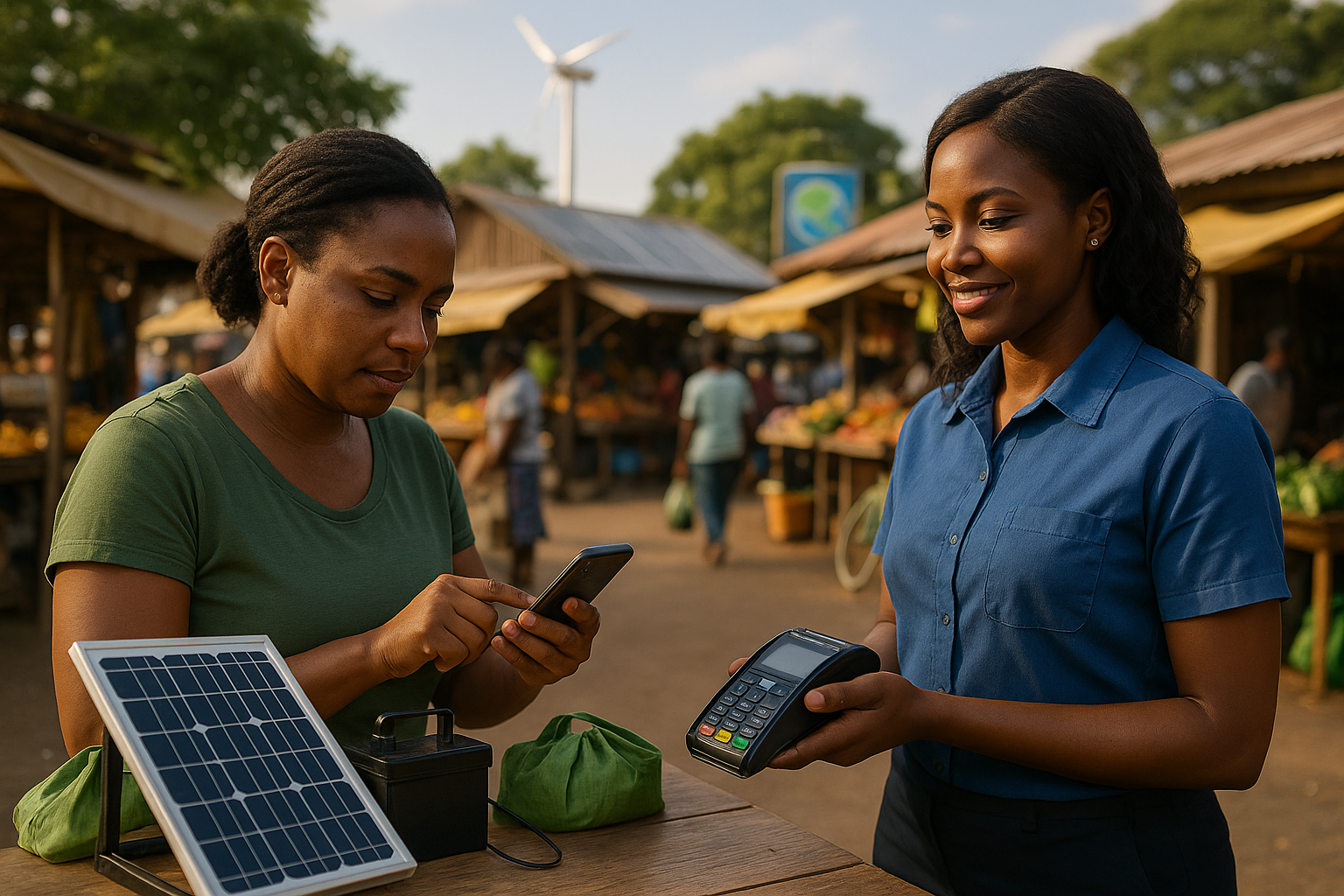Who leads and who’s missing in sustainable financial inclusion
Evidence across the corpus associates financial inclusion with clean-energy adoption, energy efficiency, and emissions reduction, particularly when access to finance steers households and firms toward greener choices. Yet the synthesis also flags risks: without appropriate guardrails, expanded access may fuel consumption that raises emissions, underscoring the importance of regulatory design and literacy.

A new bibliometric study maps how scholarship that blends financial inclusion with sustainability has expanded rapidly since 2017, while remaining concentrated in a handful of countries. Based on 1,467 English-language publications, the authors chart research trends, leaders, and gaps and set out policy pathways to link access to finance with environmental and social outcomes.
The paper, “Mapping the Evolution of Sustainable Financial Inclusion: A Bibliometric Analysis of Global Trends (2007–2025)” which appears in the Journal of Risk and Financial Management, analyzes records taken from Scopus and Web of Science through a PRISMA-guided workflow and visualizes the field using VOSviewer.
How fast is the field growing and where?
The study tracks a sharp, sustained rise in publications after 2017, culminating in 383 papers in 2024, with 2025 appearing lower due to mid-year data capture. The authors report only small annual counts before 2017, then a step-change from 2017 that continues through 2021–2024, signaling a durable shift in research attention.
Output is geographically concentrated. China (644 papers), India (302), and Pakistan (185) lead, together contributing over 77% of the corpus. Malaysia (157) and Indonesia (138) add significant volume in Asia. From the West, the United States (144), Spain (103), and the United Kingdom (94) are among the most active. In Africa, Nigeria (134) and South Africa (106) stand out. The pattern reflects countries that pair inclusive-finance policy priorities with strong data ecosystems and digital payment infrastructure.
Collaboration networks mirror that concentration. China, India, and the United States sit at the center of international co-authorship and partnership links, with ties spanning Asia, Europe, the Middle East, and Africa. The authors note growing participation from Gulf states and strengthening links among African institutions, but overall density remains skewed toward a few hubs.
Methodologically, the review triages 4,113 initial records down to 1,467 documents via explicit inclusion criteria (years 2007–mid-2025; final publication stage; English language) and then applies citation, co-citation, and keyword co-occurrence analyses to quantify the field’s structure.
Who leads the conversation and which outlets shape it?
On author influence, co-citation analysis identifies Demirgüç-Kunt, Klapper, Shahbaz, and Wang as core references with high total link strength, indicating broad, cross-field impact on both academic and policy debates.
Performance tables further highlight a set of prolific contributors and venues. Among authors, patterns show high impact can come from relatively few papers: for example, strong citation counts with limited outputs underscore the field’s concentration of influence. Among journals, Sustainability (Switzerland) publishes the most documents in this niche, while titles such as Technological Forecasting and Social Change, Renewable Energy, and Journal of Cleaner Production post the highest average citation scores, indicating significant intellectual pull at the intersection of inclusion, technology, and environmental performance.
A separate journal co-citation readout positions Sustainability, Journal of Cleaner Production, and Environmental Science and Pollution Research as key hubs that connect environmental, economic, and policy-oriented strands. Their high citation and link strengths reinforce the field’s interdisciplinary center of gravity.
The authors ground their mapping in a clear method stack: VOSviewer for network visualizations and clustering; Excel for supportive analyses; and citation-based techniques to trace intellectual structures. That combination surfaces who is being read together, how clusters cohere, and where research communities are forming and evolving.
What drives sustainable financial inclusion and what barriers persist?
Keyword and cluster analyses reveal eight thematic clusters. Anchoring terms such as financial inclusion sit alongside digital finance and FinTech (mobile banking, blockchain), financial literacy, and sustainability-aligned topics including ESG and green finance. The evolving mix shows the field broadening from access and poverty reduction toward models that integrate technology adoption, environmental stewardship, and governance.
The authors frame sustainable financial inclusion as a triple-bottom-line endeavor that balances people, planet, and profit. They link the literature to institutional theory (the role of regulation, data, and infrastructure), the capability approach (expanding agency, especially for marginalized groups), and ESG-linked finance, which channels capital via instruments such as green bonds and sustainability-linked loans.
Evidence across the corpus associates financial inclusion with clean-energy adoption, energy efficiency, and emissions reduction, particularly when access to finance steers households and firms toward greener choices. Yet the synthesis also flags risks: without appropriate guardrails, expanded access may fuel consumption that raises emissions, underscoring the importance of regulatory design and literacy.
The biggest barriers identified are financial illiteracy and fragmented regulation, compounded in some regions by weak infrastructure. The result is a persistent North–South knowledge and capacity gap, with Sub-Saharan Africa and Central Asia under-represented in output despite high need.
Policy pathways recommended in the review focus on three fronts:
- Align regulations with ESG and the SDGs, embedding social and environmental safeguards in inclusion policies;
- Scale financial and digital literacy, especially for rural and marginalized communities; and
- Expand inclusive green-finance products, from microcredit to climate-linked loans, accessible to low-income households and small firms.
Why this review matters and what’s next?
This study provides the most comprehensive temporal and geographic map to mid-2025 for an area that sits at the crossroads of finance, technology, and sustainability. It links bibliometric insights directly to actionable policy, positioning sustainable financial inclusion as more than a channel for access: rather, a systemic framework that can advance resilience, equity, and environmental goals when designed and governed with explicit sustainability criteria.
The authors acknowledge some limitations including English-language focus, reliance on Scopus and Web of Science, and a partial 2025 year and call for complementary qualitative work, broader data sources, and deeper coverage of the Global South. Even so, their map offers a durable baseline for researchers and decision-makers seeking to evaluate progress, target investment, and align inclusive-finance strategies with climate and development agendas.
- FIRST PUBLISHED IN:
- Devdiscourse










